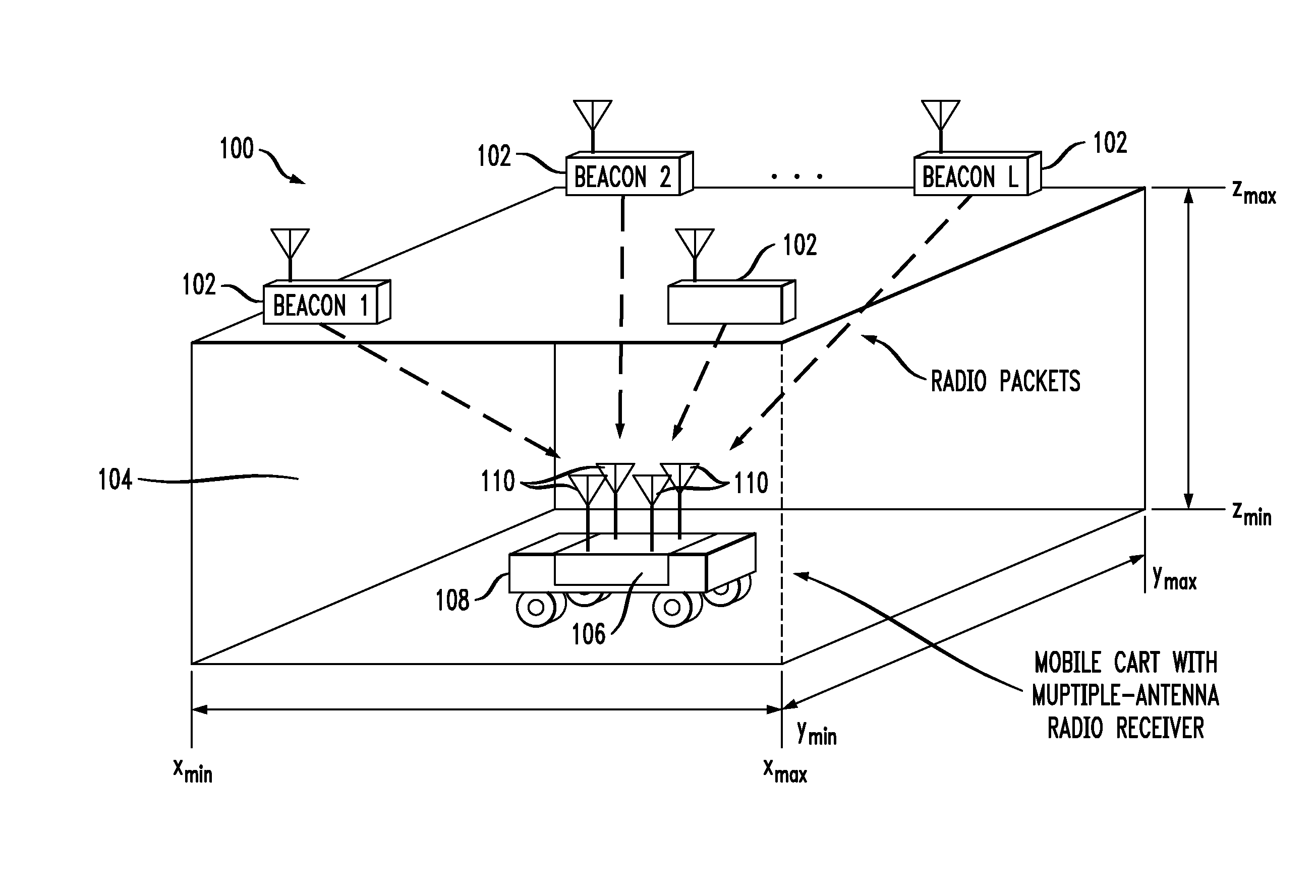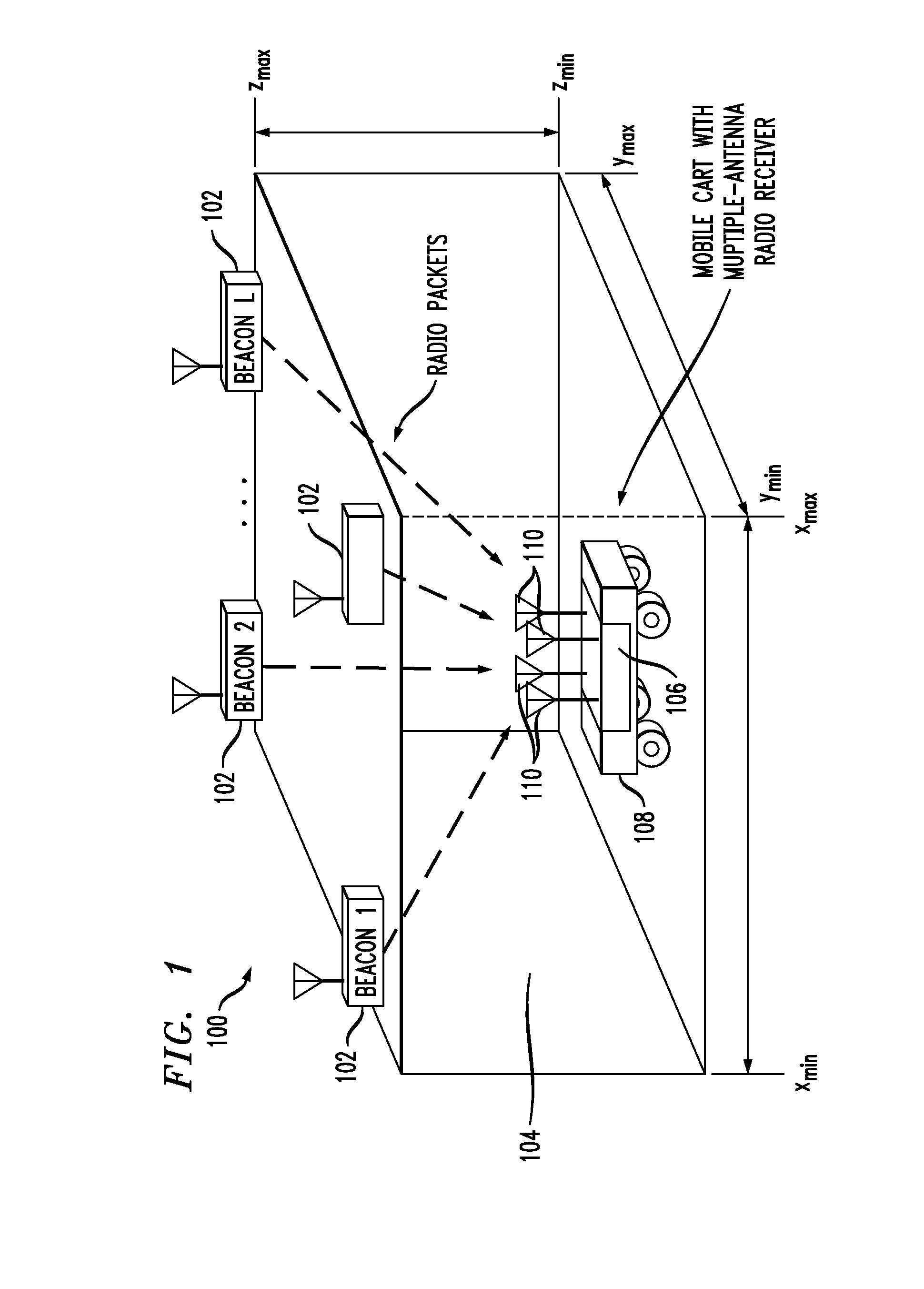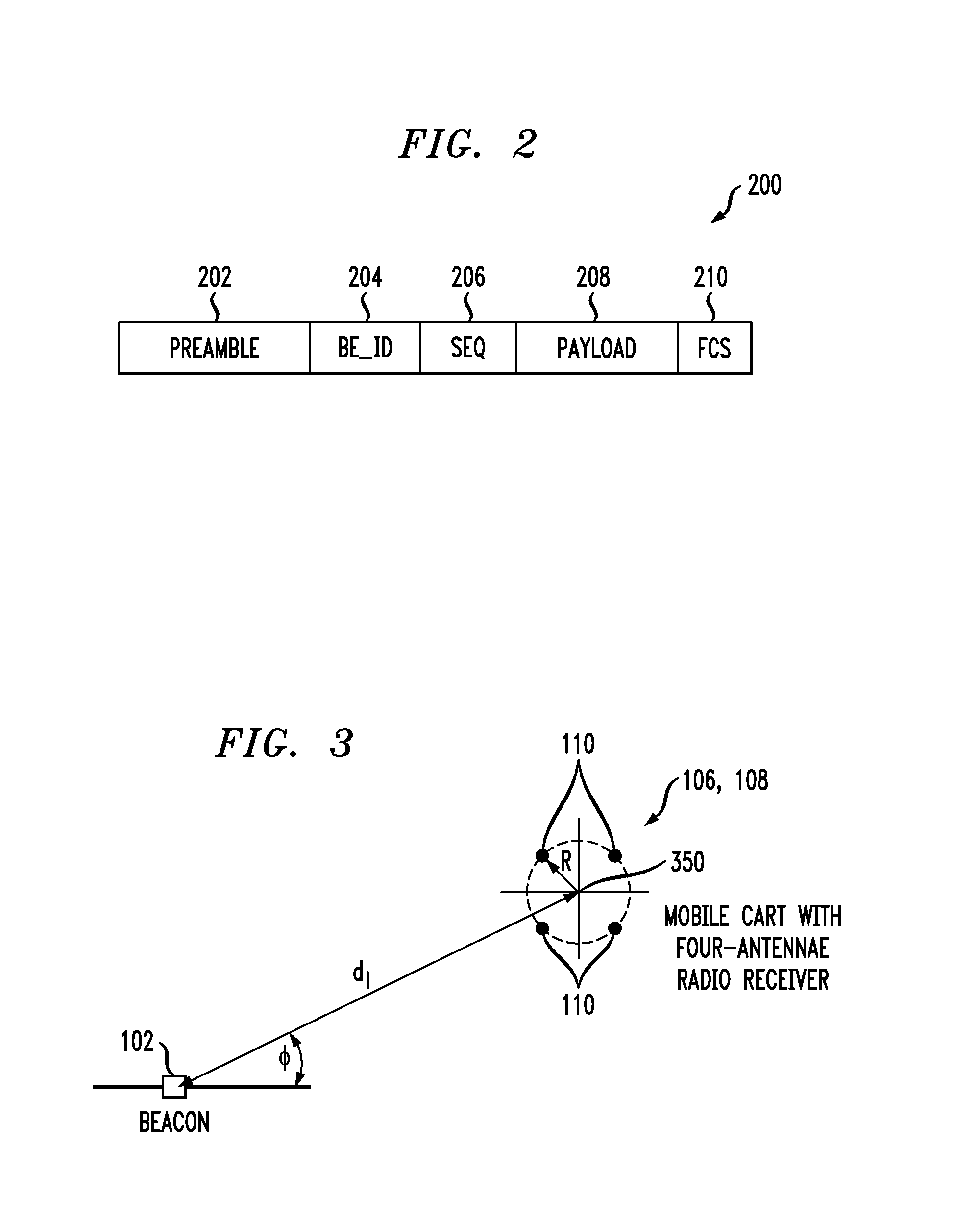Apparatus and method for estimating location using multi-antenna radio receiver
a multi-antenna radio receiver and antenna technology, applied in the electrical field, can solve the problems of large error variance, large channel coherence time, and very slow change of wireless channels, and achieve the effect of accurately estimating the position of objects
- Summary
- Abstract
- Description
- Claims
- Application Information
AI Technical Summary
Benefits of technology
Problems solved by technology
Method used
Image
Examples
Embodiment Construction
[0016]Aspects of the invention provide techniques for accurately measuring the position of a mobile object in an indoor environment. The location estimates can be derived from received signal strength measurements of radio signals that are transmitted by radio beacons deployed at known location positions in the building. Accurate location estimates are obtained by averaging, not only in time, but also in space, the signal strength measurements made in a multi-antenna radio receiver. One or more embodiments take into account spatial constraints given by the floor plan of the building. The object is preferably static or slowly moving. A multi-antenna radio receiver can be mounted to the object.
[0017]With reference to FIG. 1, in one aspect, a wireless location positioning system 100 is disclosed, where L radio beacons 102 are deployed at known positions over the location estimation area 104. Each beacon 102 periodically transmits a radio packet containing its identifier and a unique se...
PUM
 Login to View More
Login to View More Abstract
Description
Claims
Application Information
 Login to View More
Login to View More - R&D
- Intellectual Property
- Life Sciences
- Materials
- Tech Scout
- Unparalleled Data Quality
- Higher Quality Content
- 60% Fewer Hallucinations
Browse by: Latest US Patents, China's latest patents, Technical Efficacy Thesaurus, Application Domain, Technology Topic, Popular Technical Reports.
© 2025 PatSnap. All rights reserved.Legal|Privacy policy|Modern Slavery Act Transparency Statement|Sitemap|About US| Contact US: help@patsnap.com



